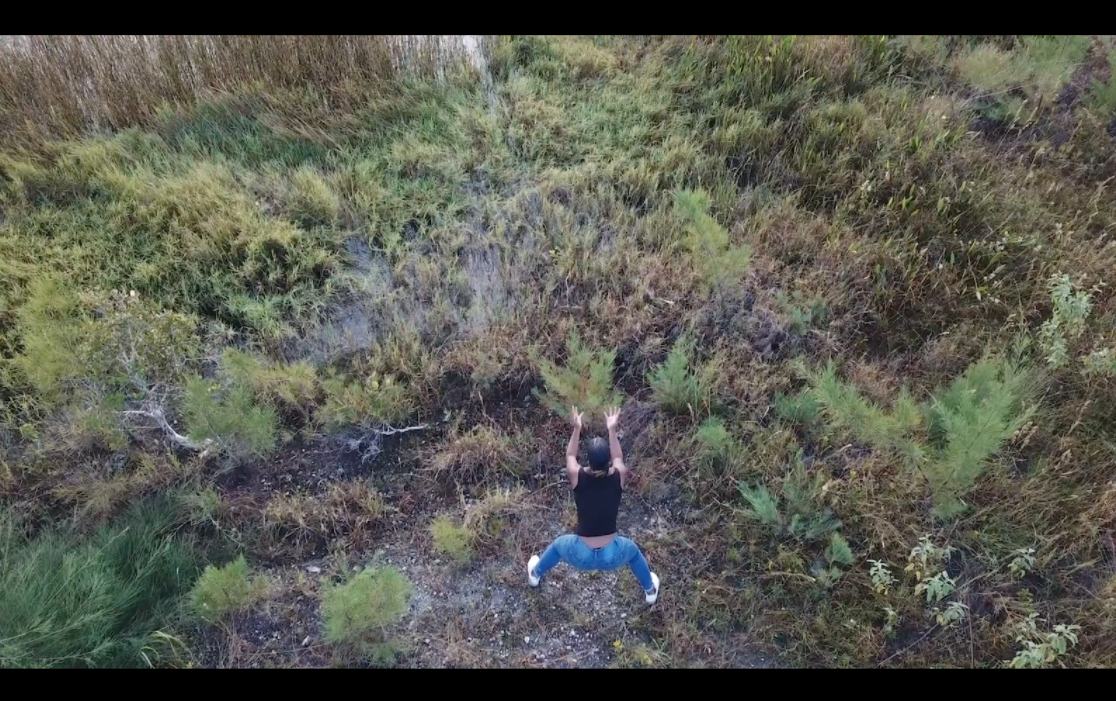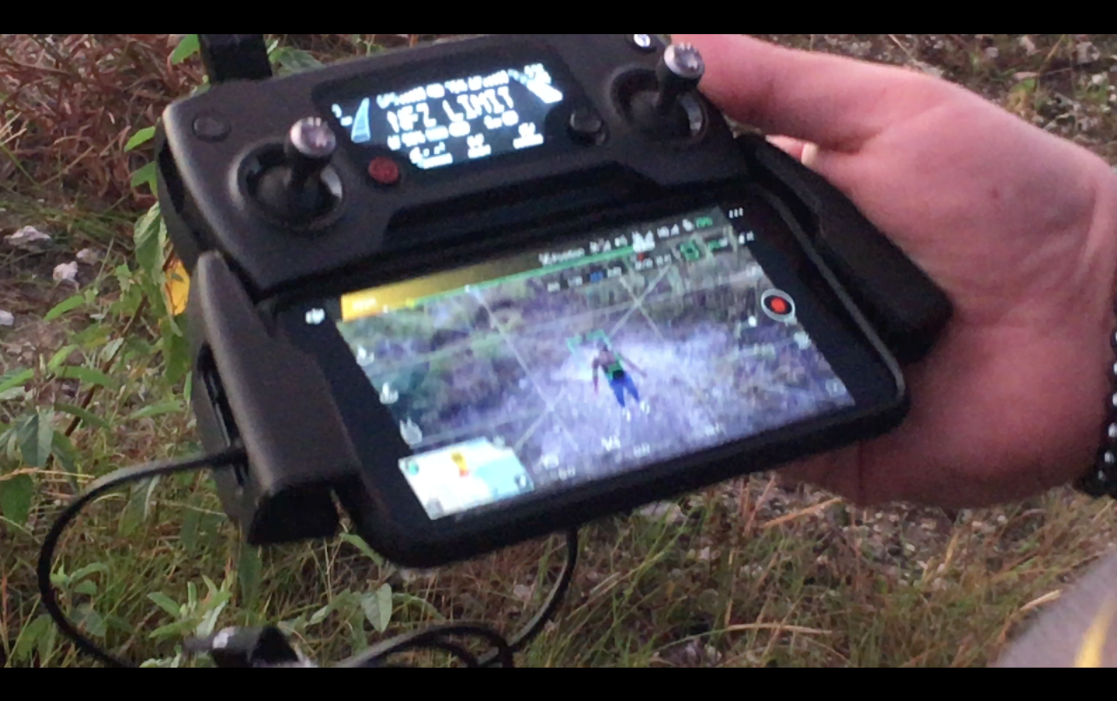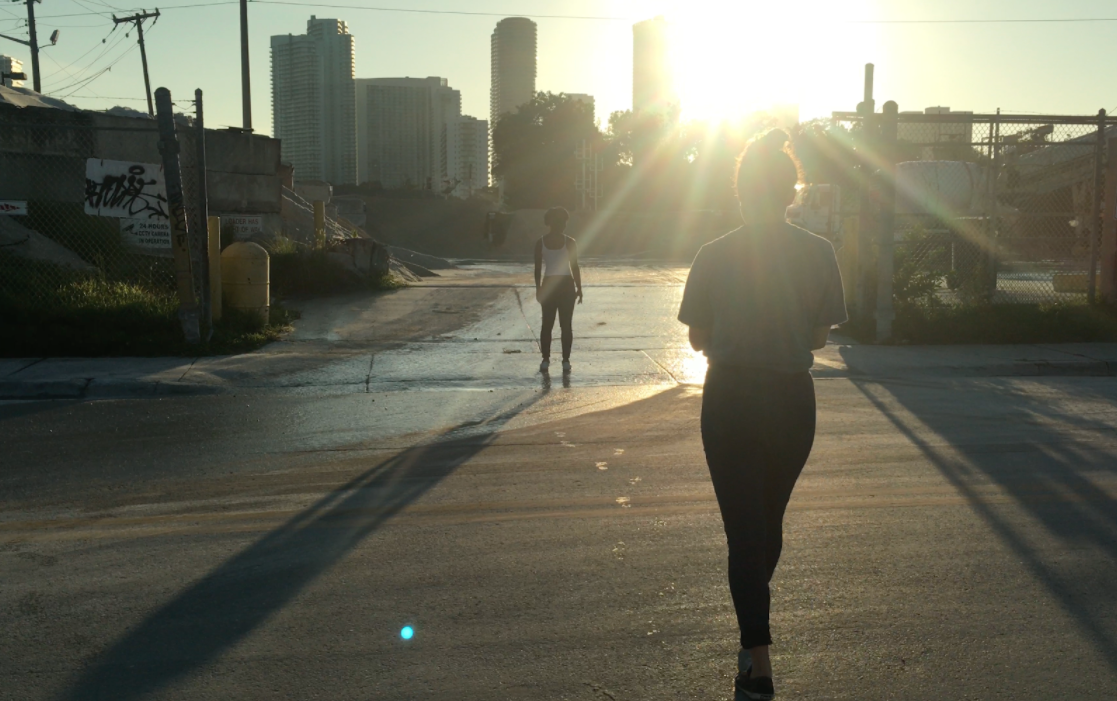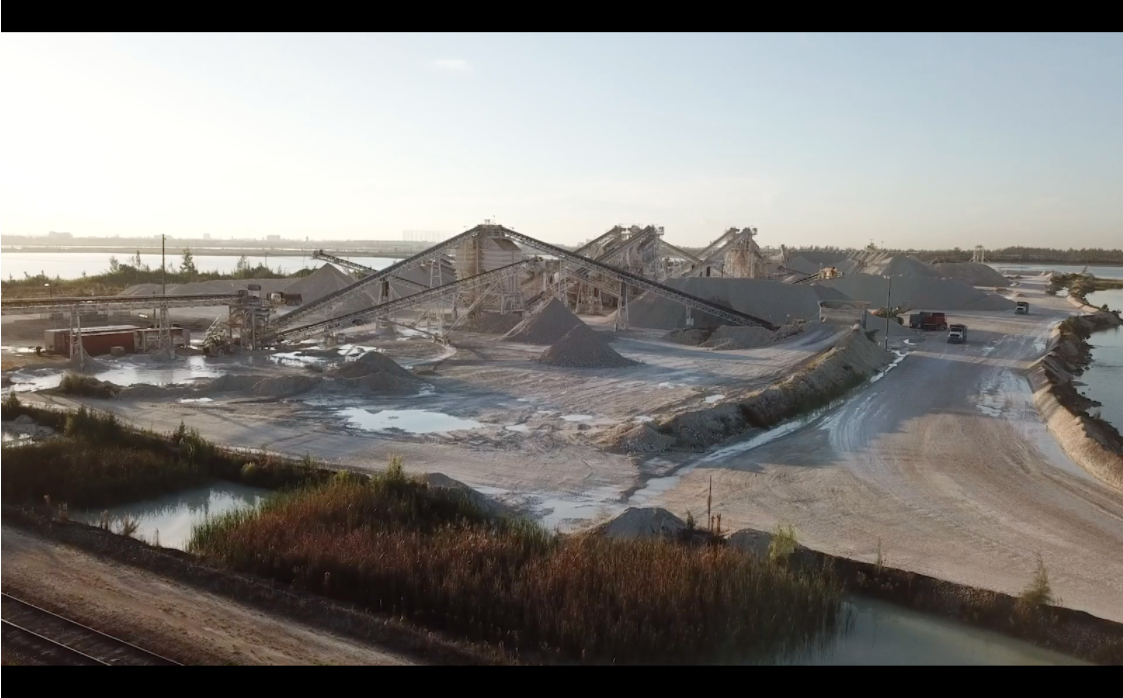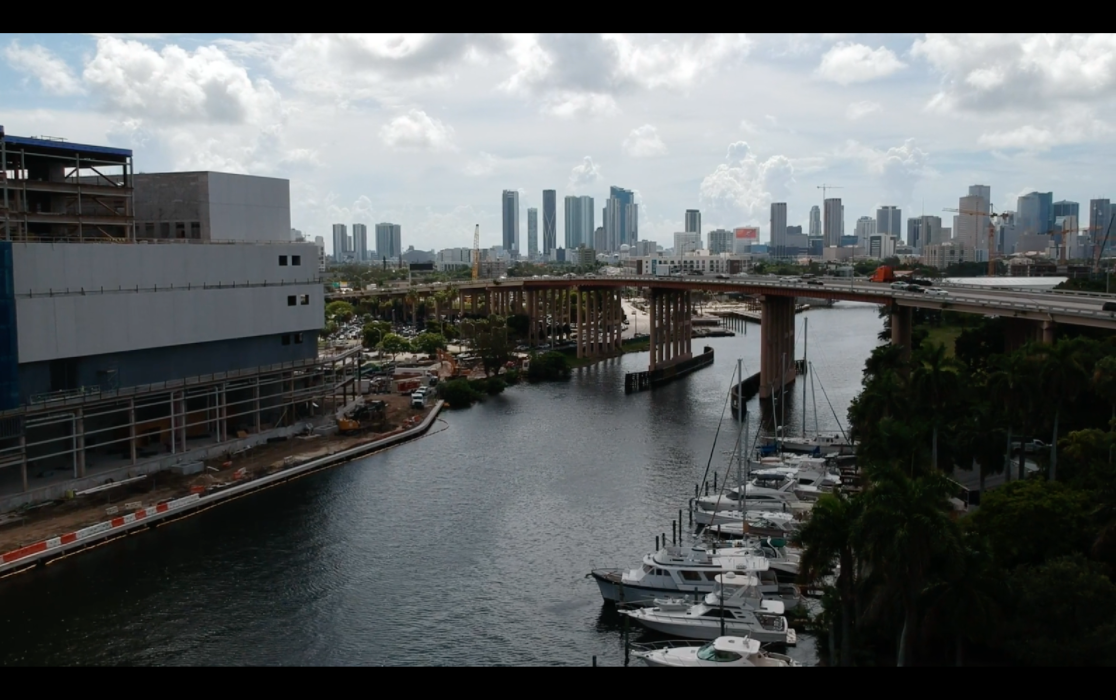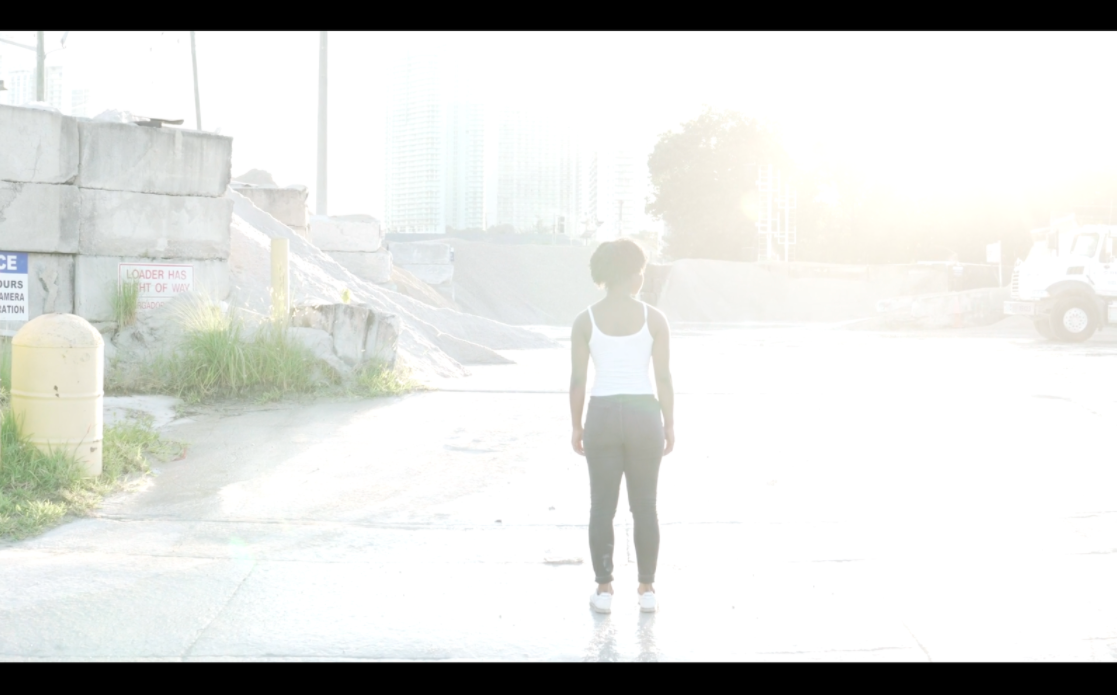Wavemaker Grantees: Evan Marcus and Maya Billig
Written by Evan Marcus and Maya Billig. All images courtesy of the artists.
Interview with the Artists
1. Tell us about your WaveMaker Project:
Evan Marcus [EM]: Maya and I worked together to create a performance film addressing climate change and adaptation in Miami. We were inspired by the music of Ethiopian composer Emahoy Tsegué-Maryam Guèbroum, who wrote about the experience of exile: exile from fascism, from god, from home. The music was so beautiful, so powerfully imbued with residue of homelessness and separation, it’s like, how can we do that for here and now. So we began with the question of how to present (v; making present) the future experience of exile. How to embody abstractions? Climate change happens at such a gigantic spatio-temporal scale, and there exists a bias to future, to model the future, to imagine the future disaster, yet that disaster is the same disaster that began when Flagler’s first hotel went up at the mouth of the Miami River. It was happening then, it’s happening now.
That was revelation. So if you ask me how this started, it’s an attempt to put into practice the curriculum circulating at ICA’s Art + Research Center, Gean [Moreno]’s thing. Seminars led by Rozalinda Borcilă, Dr. Kathryn Yusoff, the Frantz Fanon Symposium, Rehana Zaman, TJ Demos, and so many more. Working with [NAME] Publications. Seeing Jacqueline Gomez’s exhibition tracing archaeological digs in Miami. What I’ve been exposed to as a student at FIU, particularly seminars with Dr. Kevin Grove, a year of community research with the late Dr. Moses Shumow, and conversations with Professor Fereshteh Toosi are part of my education and alive in this concept.
Maya began designing choreography and storyboarding before we were grantees. We collaborated with her colleague Kashia Kancey from New World School of the Arts on the performance. Months of driving around the Miami River district. Observing, listening, exploring, collecting. In April 2019, we began a conversation with the Environmental Humanities Lab at KTH in Stockholm, where artists and scholars came together to create a meaningful bridge over this conversation. There was a global back and forth between scholars and artists, feedback over iterations of performance film from summer into Fall, and collaborated on sound design with FIU professor Jon Perez. Roman Corrales was our drone pilot for overhead shots. The culmination was a short film screened in Stockholm November 2019.
Our planned spring 2020 local screenings were cut short by the coronavirus pandemic. Now we’re reassessing the best ways to share this piece and collaborate on a broader conversation in Miami. If you’re reading this and have an idea please reach out: emarcus@fiu.edu.
Maya Billig [MB]: When Evan presented the idea for the film to me a couple years ago, I was immediately inspired. And although the project has grown and taken many turns, it still stands true to its intention: an intersection of the climate crisis, residents of Miami, and art: particularly dance. With dance and movement being at the core of many of Miami’s cultures, I believe it is an extremely effective medium for communication. I designed the choreography as a way to tune into the emotional and psychosomatic information of what a human would personally experience if displaced from their home due to climate gentrification. Awareness and empathy are some of our strongest tools in waking up the masses to the vast effects of the climate crisis, which are rapidly progressing.
2. What was the easiest aspect of this project? What was the most challenging? Did you learn something new? What do you wish you had done different? What went perfectly?
MB: The easiest part of this project was deciding who the main dancer would be, and the choreography I would set on her. From the very first time I envisioned the film, I saw Kashia as our lead. She’s an exquisite mover with a special aptitude for becoming a conduit of emotional information. I knew she would carry the weight of the meaning of the project with balance and grace. In tandem, the choreographic outline blossomed effortlessly.
The most challenging aspect for me was discovering my personal connection between dance and the global climate crisis. But I’ve realized that art is an ongoing exploration that is not always about finding, but rather seeking. If art can continue to prod us to ask more questions and become more informed, then it’s doing its job.
During this project, Evan has given me a deeper and more realistic sense of what is happening to people here in Miami: it’s already here. This has led me down types of research I may not have tread otherwise. This is why as we find our evolutions in art and science, we must continuously seek out their cross sections in order to offer one what the other cannot.
What has gone perfectly during this project is the unwavering sense of intention and progressive, critical thinking from every single collaborator on this film.
EM: Translating between disciplines, especially between the intellectual and embodied, is hard. Taking a purely textual practice into the embodied...oof. Having the support of Locust Projects’ WaveMaker and the Andy Warhol Foundation was such an enormous validation to say: hey your idea is legit, just do it. Just doing it was difficult for me, but that’s why Maya was such an ideal complement, she just gets things done.
3. Tell us what you're most excited about as a result of this project? Has it inspired a new work, collaborations, direction? Has it brought new opportunities for expanding it through other grants or exhibitions? What, where and when? Tell us more...
MB: I’m excited to eventually screen this in Miami communities to help spread awareness of climate gentrification. It will be a beautiful thing to witness the conversations this film will eventually help to inspire.
This project has broadened my view on artistic research. Although art can take on an ethereal and dramatic essence, that drama has a root somewhere in reality. By expanding how and what we research, we discover more than what we thought possible. Art is a call to activism, science, and community.
EM: Screening this at KTH in Stockholm was like, woah there are other people actively trying to take academic insights into cultural production and experimental visualization. I had taken a class at UM with Dr. Meryl Striver-Rice on Visual Anthropology of the Environment, and seeing how that class work has a space outside of a fluorescent rectangle is energizing. We spent so much time iterating and researching, this next year we’re taking this as an opportunity to learn, listen, and collaborate with people in Miami who are already doing such important work.
We’re actively collecting sounds by the way. Still collecting sounds. Sound bites. Gonzo ethnography. If anyone has sounds from their projects, or would be interested in being interviewed, has something to say about this...we’re open ears: emarcus@fiu.edu.
4. In one sentence - what one thing about doing this project will stay with you?
MB: Global issues require collaboration, as does the art that represents it.
EM: Your ideas deserve your attention, and you deserve to give attention to your ideas.
ABOUT THE ARTISTS
Evan Marcus is a first-year MA/PhD student in Geography. He's exploring how tropical and sub-tropical landscapes are socially constituted. How do financial valuations mediate human understandings of the environment? How do understandings of finance, conservation, and ecology shape livelihoods in Miami? How can visual methodologies be used to represent these relationships? He received his Bachelor of Science in Finance at Florida State University.
Maya Billig was born and raised in Miami, FL, where she currently resides. Through research-based practices, she develops choreographic works for film, stage, and site-specific performances. As a Here & Now 2020 artist, she’s currently working on Brink, a project commissioned by Miami Light Project. Her recent live works have been presented at the historical Kampong in Coconut Grove, Fountainhead Studios, and Art Basel Miami where she collaborates with visual artists to create multi-disciplinary experiences. Her dance films have been selected by Crosscuts (Sweden), Prisma Independent Film Awards (Rome), American Dance Festival Movies by Movers, and Screendance Miami.
Evan Marcus and Maya Billig received a Cycle 5 WaveMaker Grant in 2019. Since 2015, WaveMaker Grants have awarded $399,000 in grants to 77 Miami’s most visionary artists, collectives, and curators.
WaveMaker Grants at Locust Projects is made possible by support from the Andy Warhol Foundation for the Visual Arts and is part of the Warhol Foundation's Regional Regranting Program. Part of a national network of Warhol-initiated regranting programs, WaveMaker Grants is the first in the southeast. For more information about the Warhol Foundation's Regional Regranting Program, please click here.

